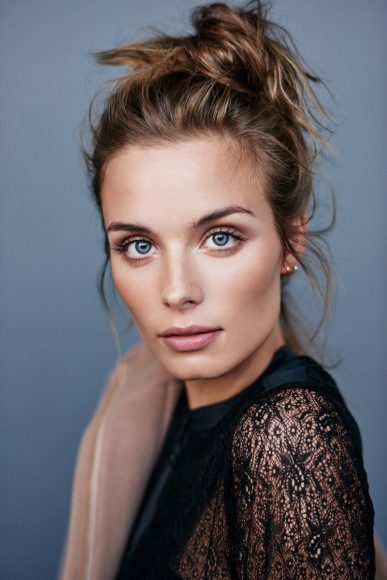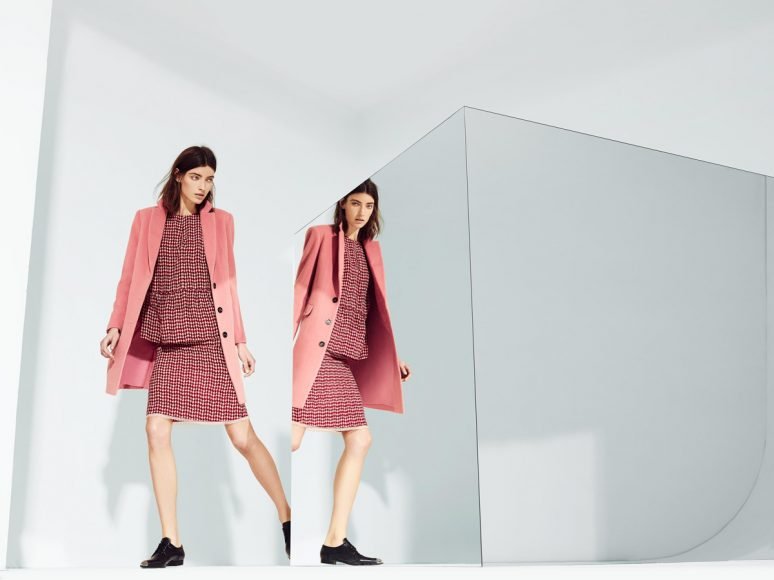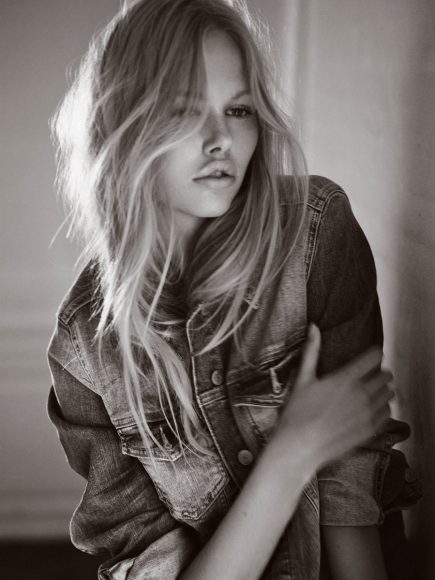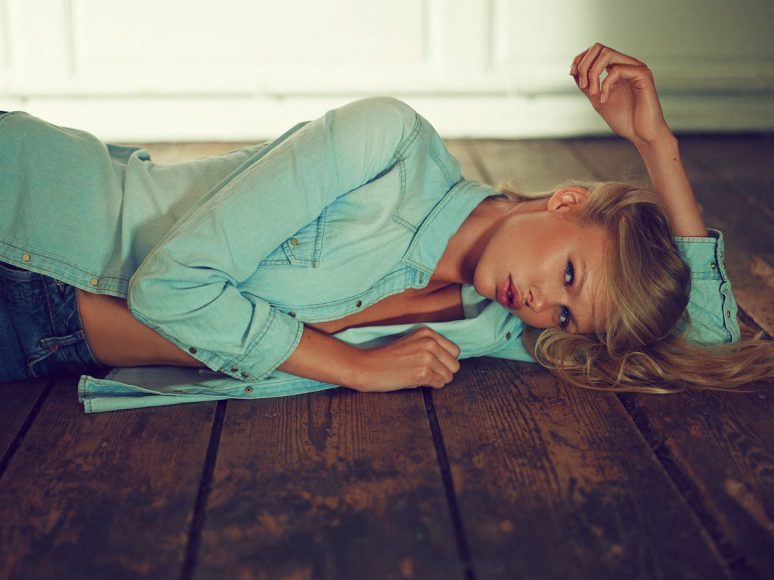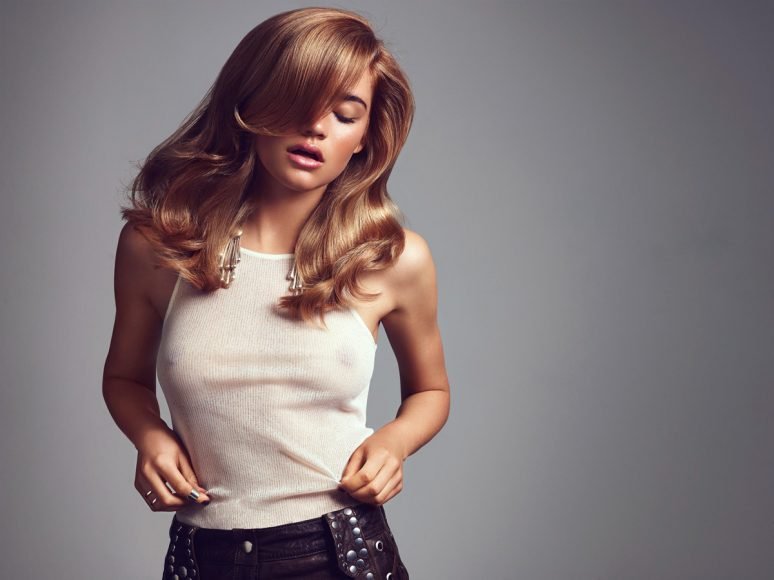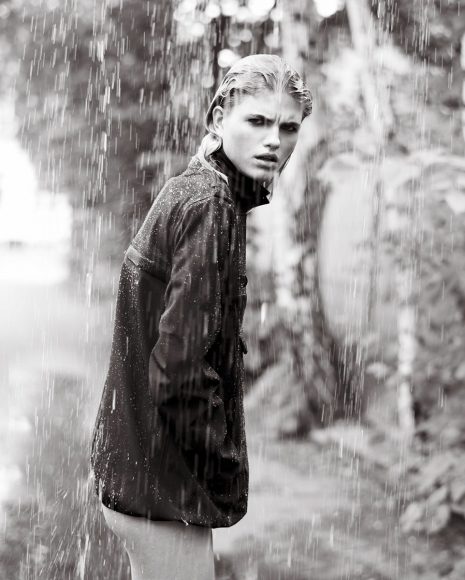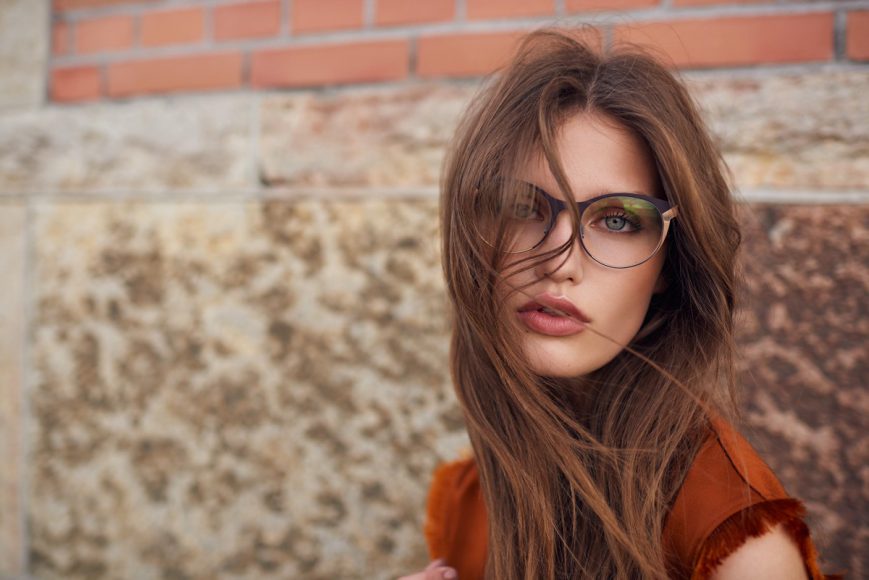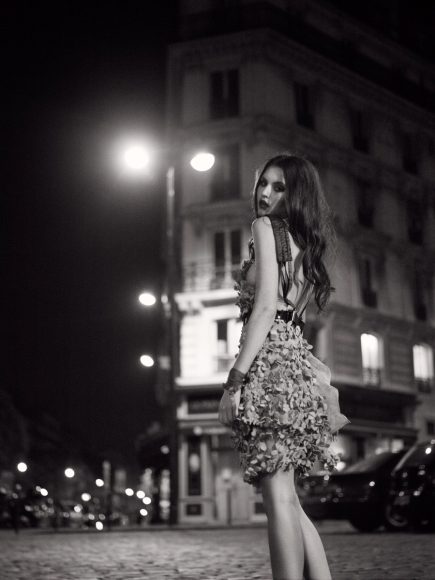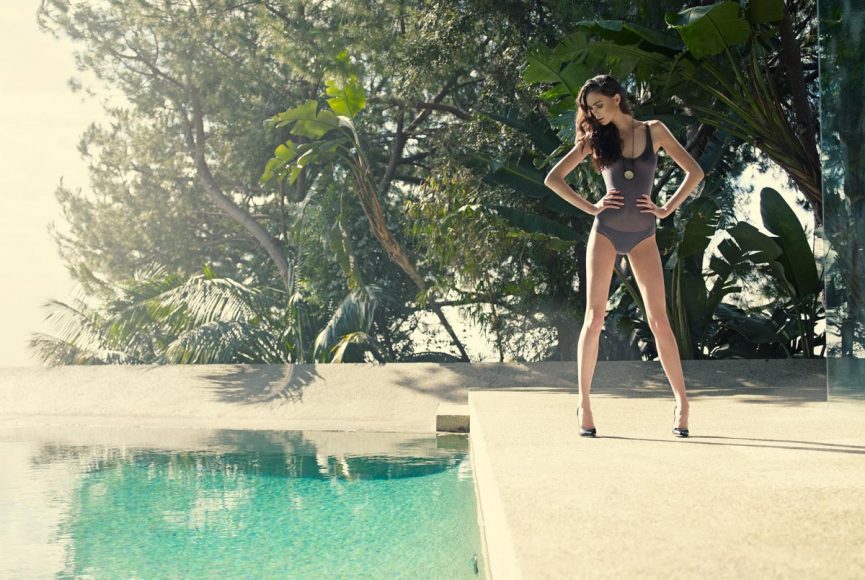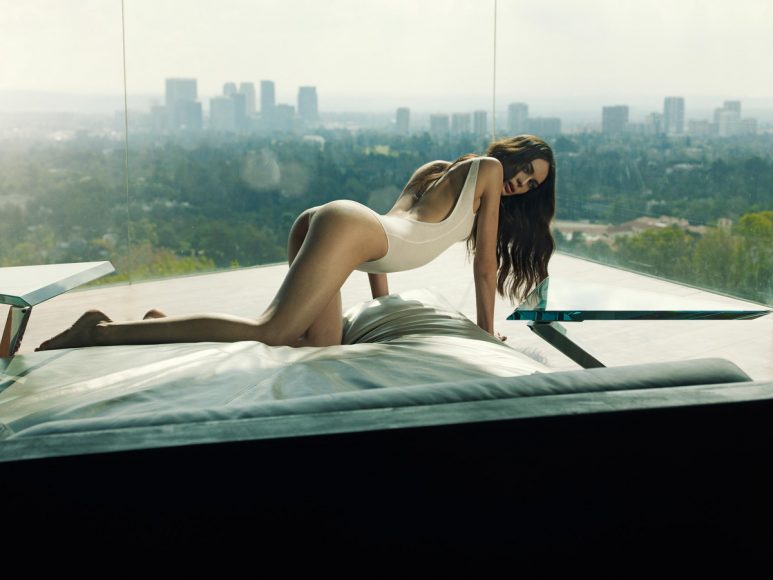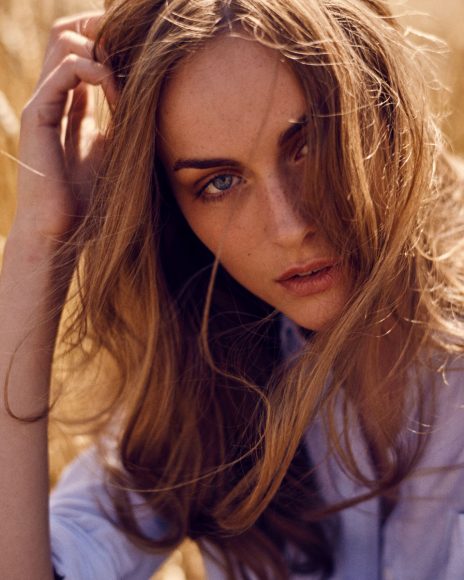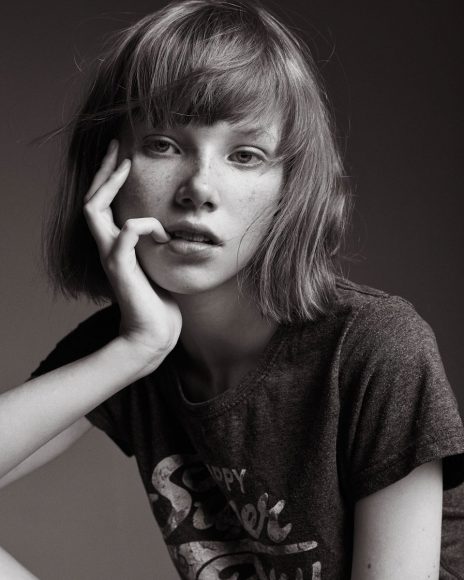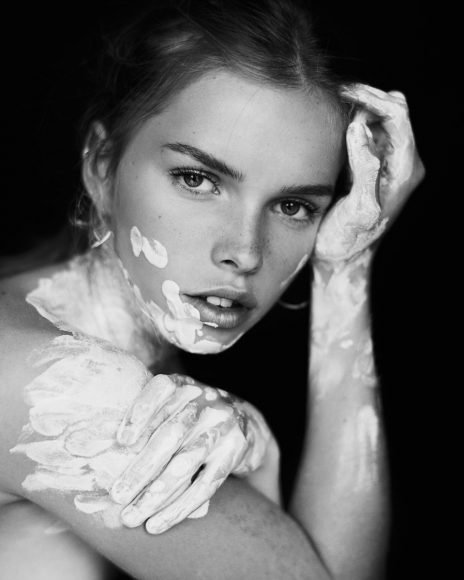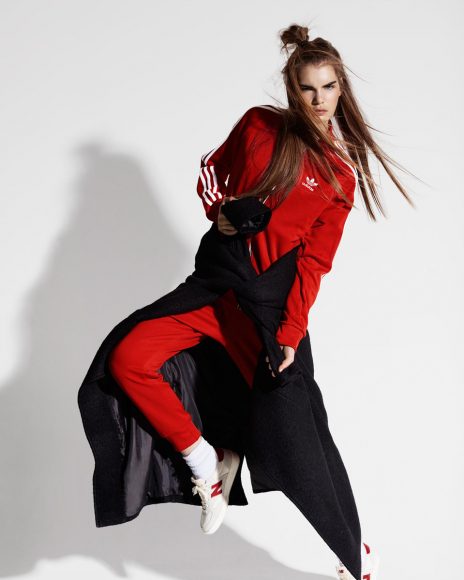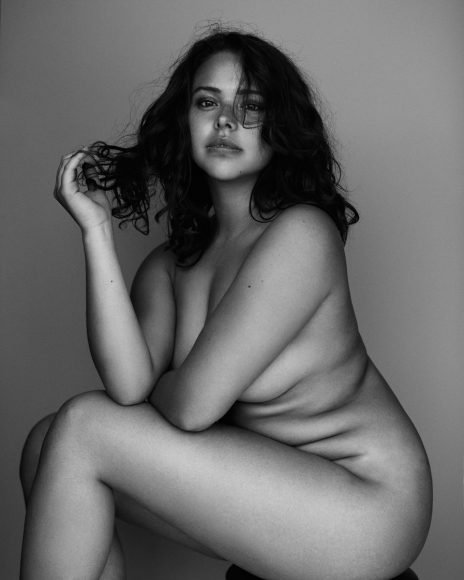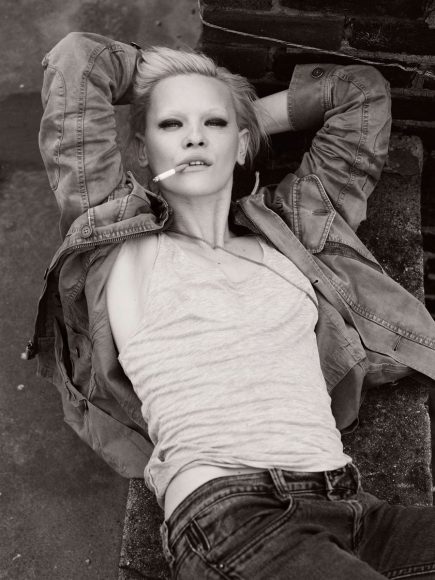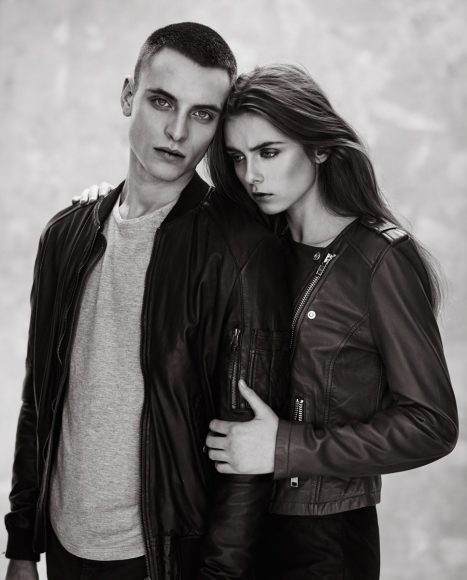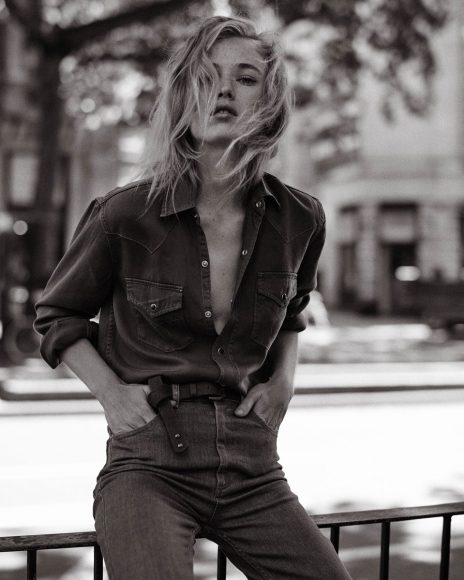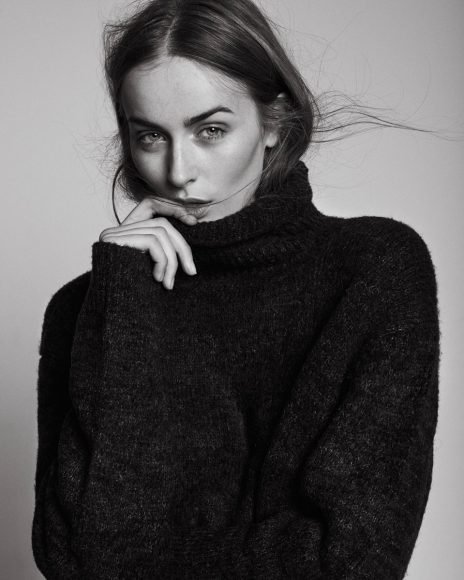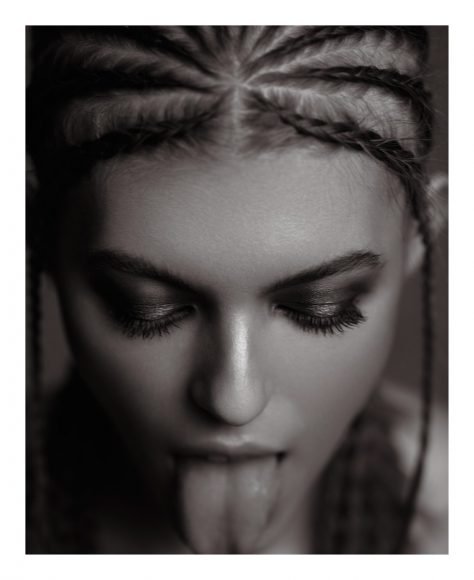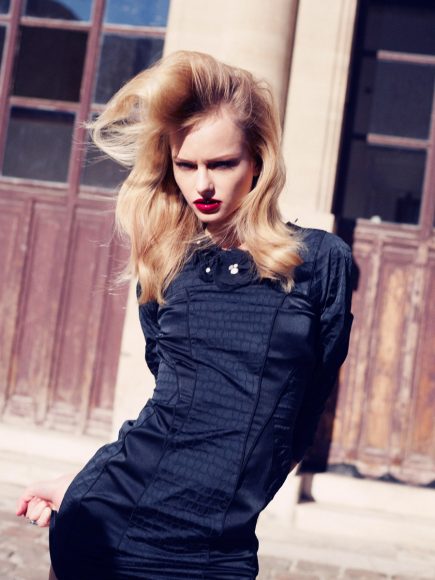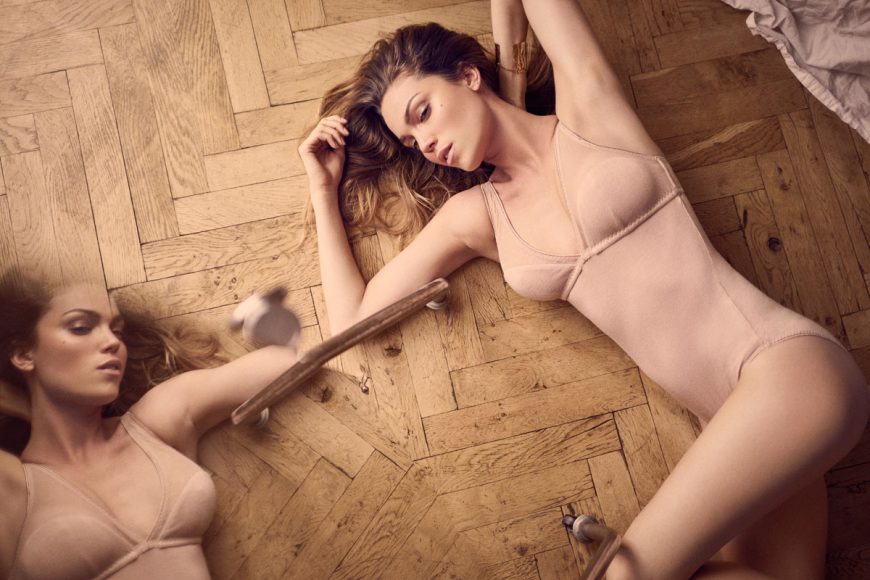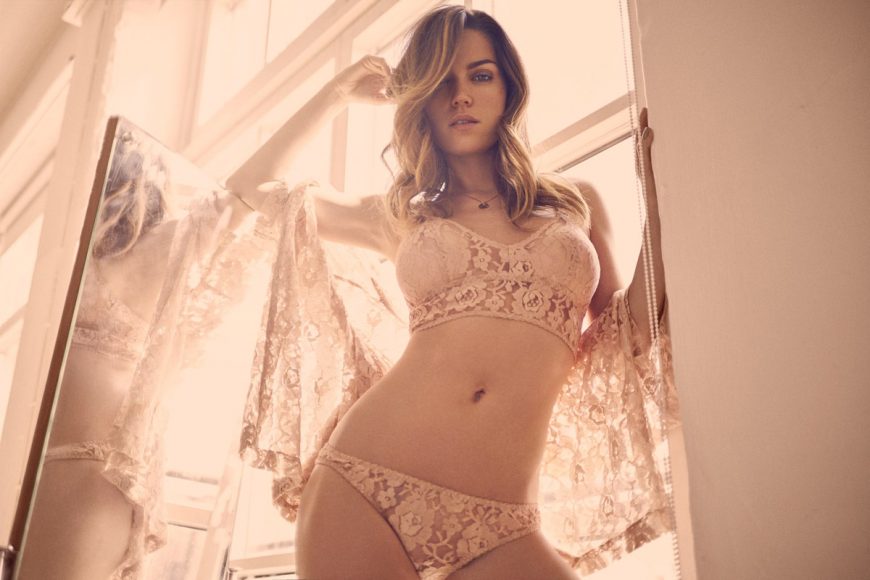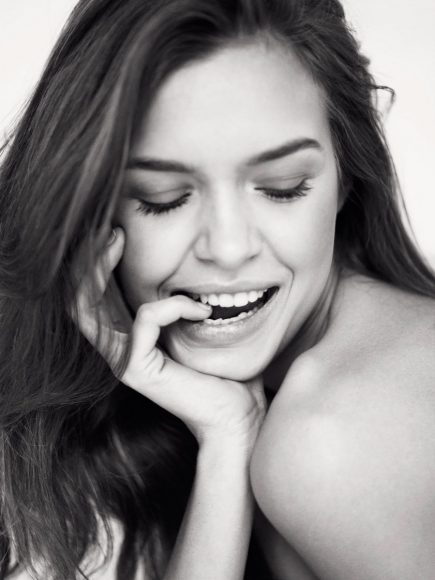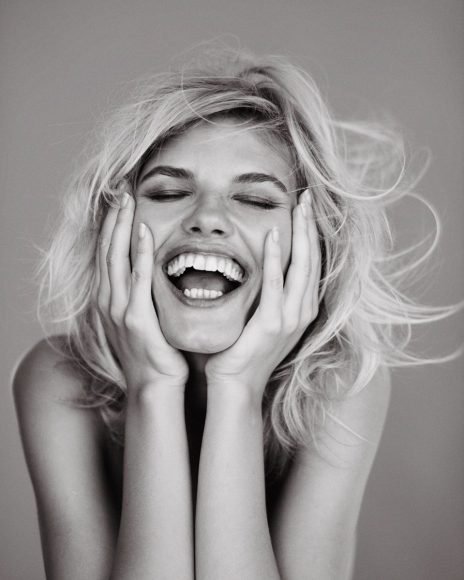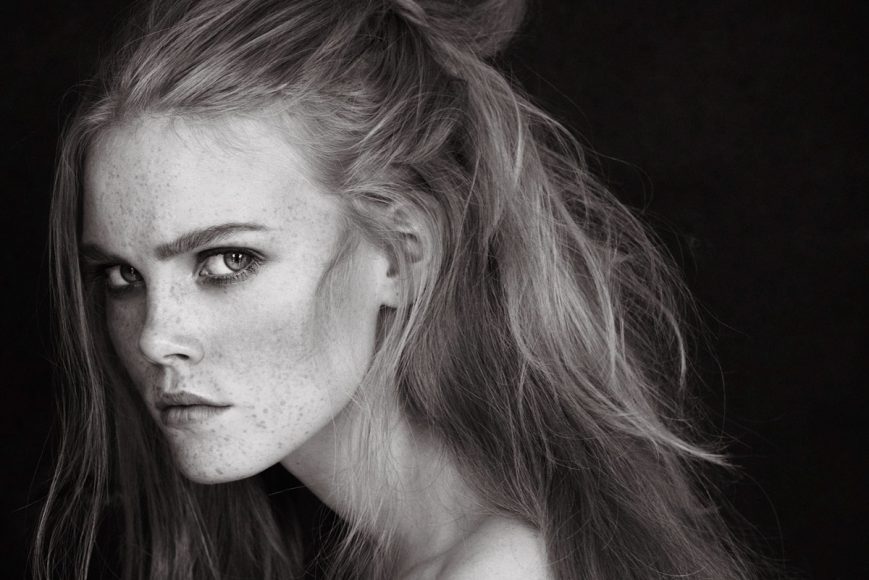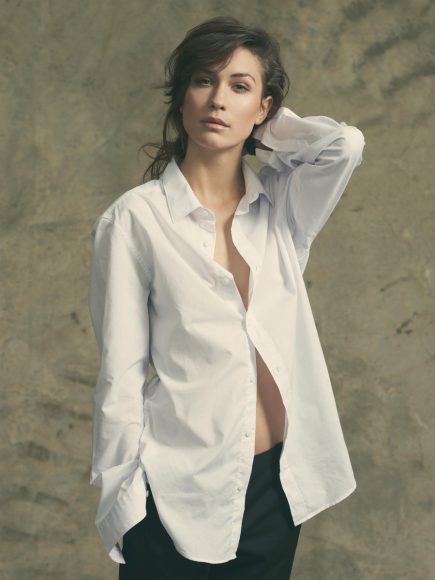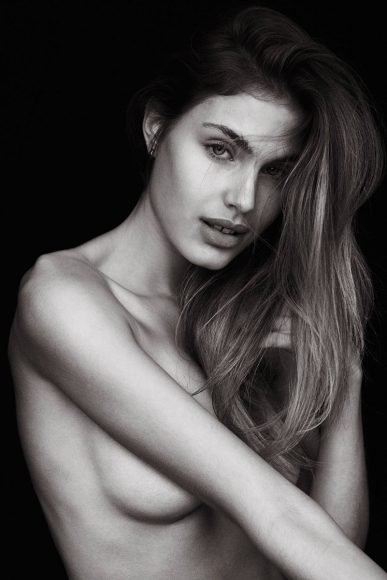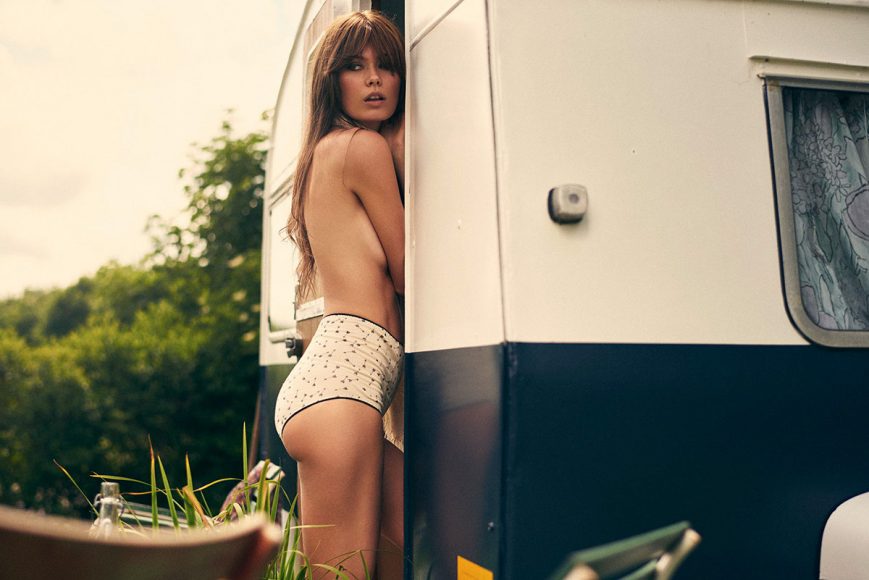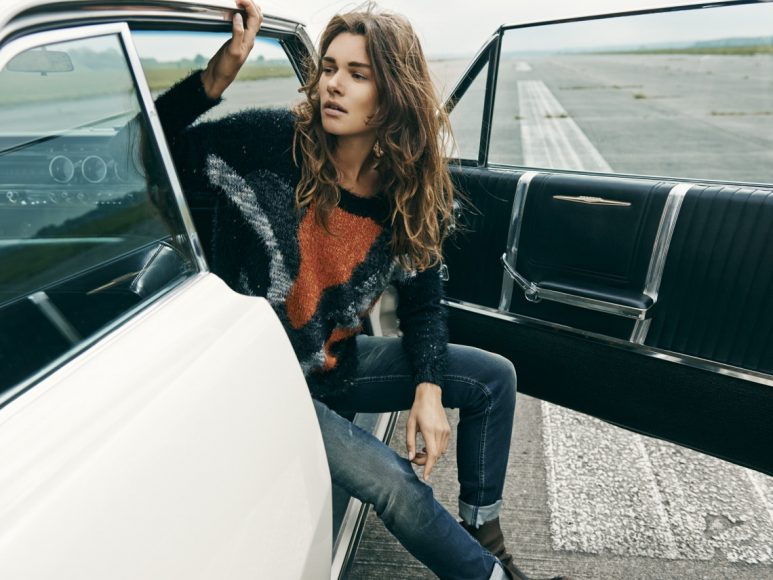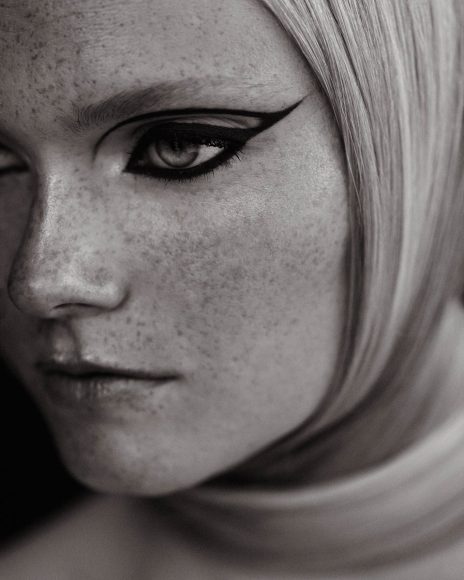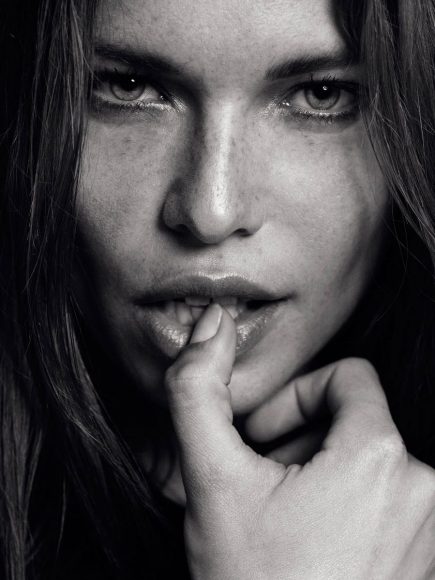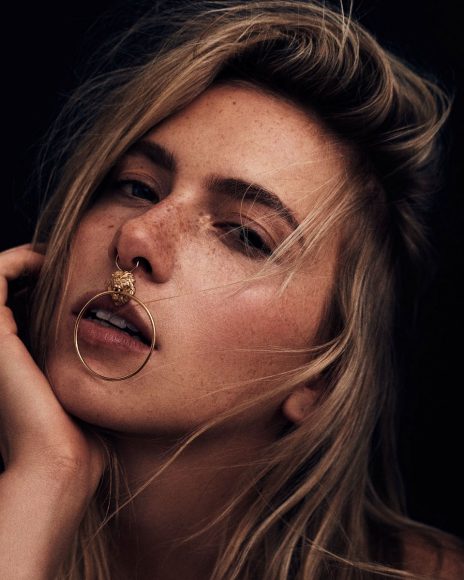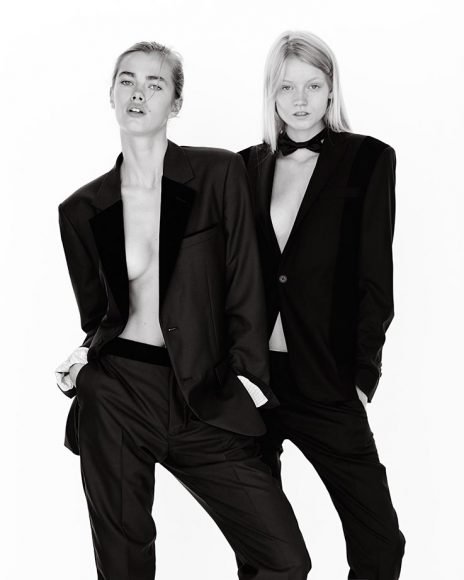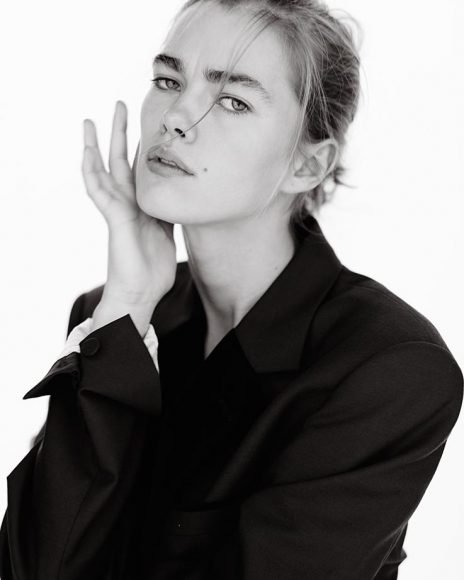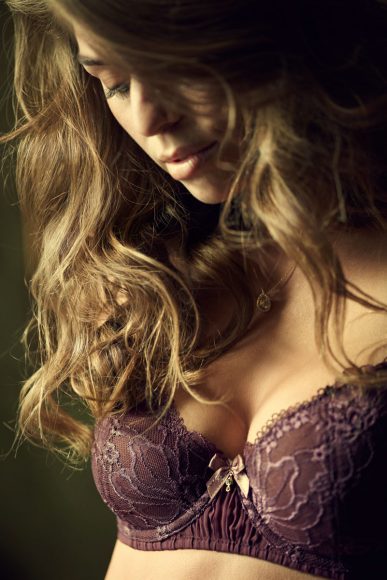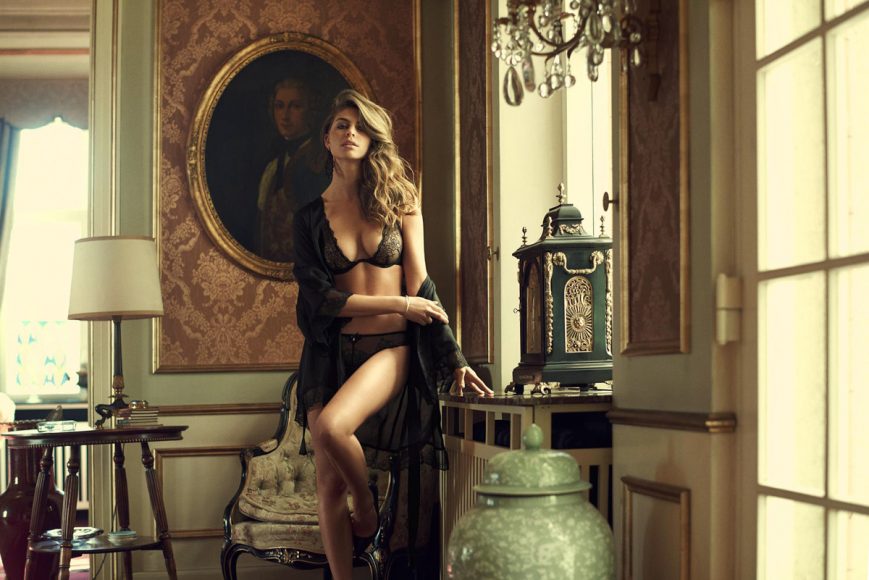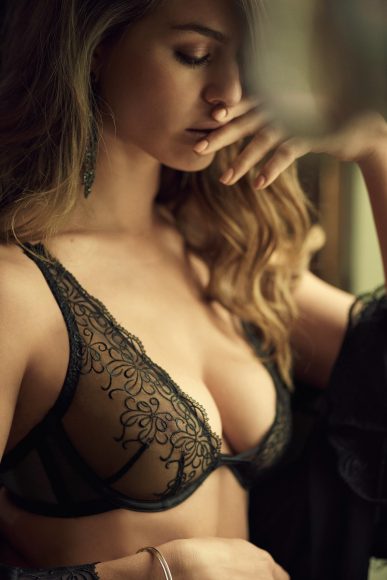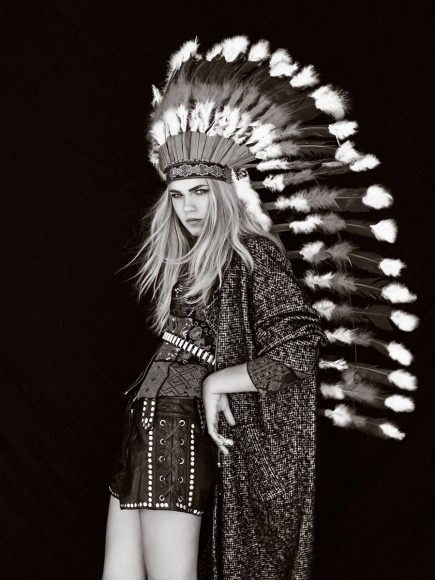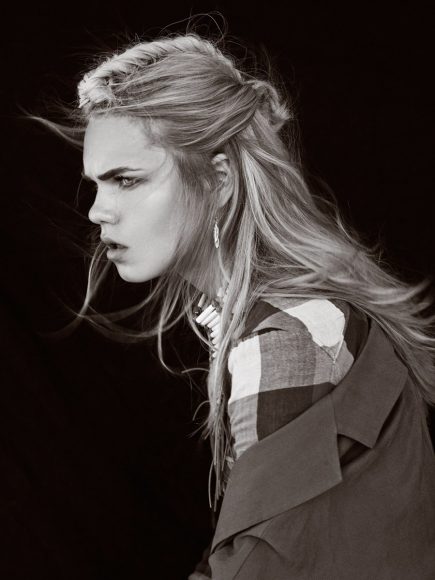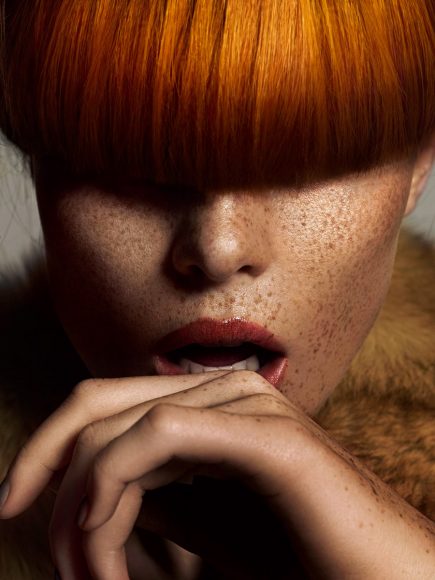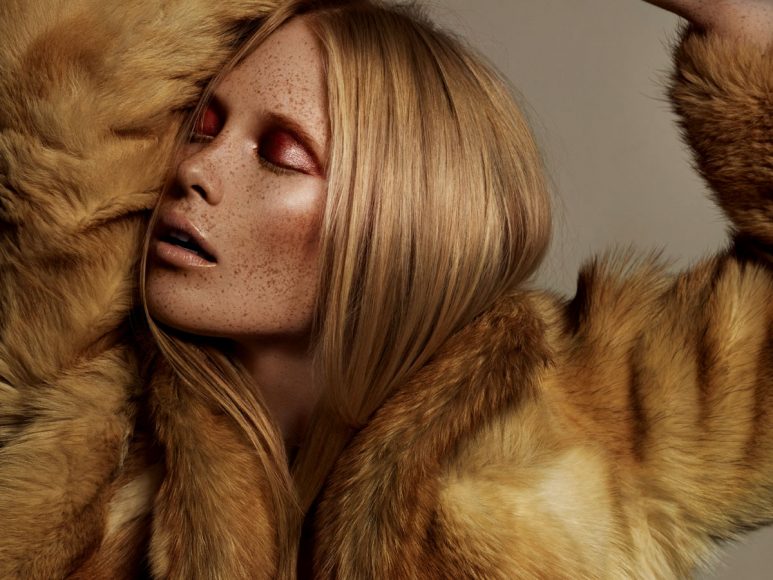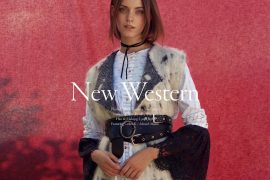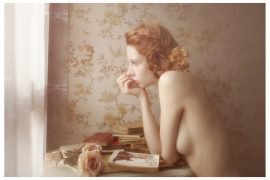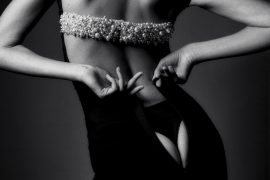Spanning almost two decades, Henrik Adamsen‘s career has seen him shift through a number of key roles within the realm of graphic design. Characterised by his positive outlook, candor and clarity in his images, the Danish photographer speaks to The Forest about storytelling, visual simplicity, hunting the perfect moment and everything in between.
Interview by Michaela Bednarova
Henrik, what do you love the most about the city you live in and how does it inspire you?
H: I’m not really sure that the city as such inspires me, it’s about the atmosphere and the sights and the people living here. It has a very casual atmosphere when you walk on the street, people will actually look at you. Ιf you live in Paris, London or New York, people sort of look down, they don’t look at you. It’s kind of a strange thing and here people are very open and they actually look into your eyes.
M: So it is very intimate even if you are just walking on the street.
H: Yea, I guess you could call it intimate if you are not used to it, here it is normal, which is nice I think. But it’s more the sights and the atmosphere really. It’s quite a small place, in the centre of Copenhagen you could walk from one end to another within quite a short time and that’s nice indeed.
M: Which would be your favourite locations for shoots?
H: It is difficult for any local photographer to find interesting locations where he is actually based. I have it a lot easier finding a location when I’m not in Copenhagen or in Denmark for that matter. As soon as I get out of the city, I immediately find locations everywhere. But my favourite places to go, would be places like Paris or somewhere with an exotic beach something like that. That is quite nice.
M: So it is easier to find the inspiration or the location when you are not that familiar with it?
H: Yea, I think it is easier when it is not well known to you. I think it is maybe because you are used to seeing it, so you don’t see it from that angle, you don’t see it from a photographic perspective, it is just home, you know.
M: If you could choose any place in the world, where would you like to live?
H: I already lived in London, I would probably go for somewhere large like New York or Paris, probably New York.
M: What was your favourite part of living in London?
H: That you had everything close at hand, which was quite nice, everything was sort of available to you. Apart from that, it is not really that different from living in Copenhagen, it is juts the size.
M: What would you do if you knew that you could not fail?
H: I think I would still be doing what I do, it is not that different. I think I actually stupidly live that thought. I actually am like that. I live as if I could not fail. I don’t think about oh my god what if I blow this or… That’s not how it works for me. I have never really thought about that, of course, you are nervous when you have a large client or something like that, you think about it. Last years I started not to think about it because it makes no sense. The client booked me for being me and you can’t fail for being yourself. I still live my life as if I could not fail.
M: If you could change one thing about yourself, what would it be?
H: That is tricky. I don’t know, maybe it is a man thing, but I don’t spend too much time thinking about what is wrong with me. Hahaha. I don’t know, that is a tricky question. I would probably just change the way I look just because I could. I don’t know, I haven’t thought about that, really. Just for the fun of it, I’d probably change the way I look.
M: Are there any personal traits of yours which you think might annoy people?
H: Yea, I guess I’m too full of myself to see it now, haha. No, I don’t know. I haven’t really thought about, it is a very interesting question, though. I really don’t know apart from that, because I kind of like being me, even how I look, I think it is kind of less intimidating to some people when you work with them. That I’m quite normal looking. It is nothing crazy about it, as far as I’ve heard I’m pretty down to earth person and I think that is a huge advantage when you shoot, that you are able to make people feel relaxed when you shoot.
M: Is there an item you possess which you cherish the most?
H: I don’t really collect art, I don’t attach myself too much to specific things, I think at the moment it would be actually this, my sort of play camera. It is a Fuji xt1, which I carry with me pretty much everywhere I go. I use it quite a lot because it is quick and it is easy to use and I don’t carry around my work cameras everywhere. I always keep it in my shoulder bag. Apart from that, I don’t really attach myself to many material possessions, not even cameras, it is still just a camera.
M: Do you like to take a break from photography sometimes?
H: I do but at the same time I can’t wait to get back. It must be a pain in the ass to be on a holiday with me. I still think about taking pictures, I don’t take pictures on my holiday, well I do but that is with the fuji camera. I don’t work when I’m on holiday.
M: When you are not working, where can we find you and with whom?
H: Here, It is really sad. I spend time with my friends, most people who know me well would probably say that I work all the time. So it is either here working on pictures, which is where I’m right now at home or in my studio. Then I sometimes just go for a walk or something like that, I like travelling but it is, sadly I’m at home quite a lot. I don’t know if that is sad, in a way it is I suppose.
M: Is there a superpower or some kind of talent you would like to have?
H: Mind reading would probably be great, I work with a lot of women. Sometimes it would be nice to hear what people are actually thinking.
M: And what would you do if you were invisible for a day?
I like observing people while I’m waiting when I’m at the airport, I like to just look at people. The thing is that when you observe people, people are usually aware that they are being observed. If you are invisible they wouldn’t be aware, it is like watching animals in a way. I guess you know probably a few people that you think they can’t be like that when they are on their own, I would love to see them when they are all alone if they are actually like that in real life.
M: You have been occupied in different positions within fashion and advertising industry, before shifting your focus on photography. You entered this field as a graphic designer and retoucher, what drew you into this field? How different retouching was years ago in terms of aesthetics and difficulty of the process?
H: Well, these are a lot of questions in one go. I used to be retoucher and of course, I turned into graphic design and I think it is one thing leading into another and alike from retouching into art working and art working in graphic design sort of; one thing to create rather than fix. I like the idea, that I could actually control everything myself.
M: Most photographers practice only photography, which might make them oblivious to the other aspects of the industry, especially in regards to advertising and its needs. Having been involved in all stages, from the inception of an idea as an art director, to its execution as a photographer, the post production as a retoucher, how has all of this shaped you as a photographer?
H: It has definitely helped me think in layouts. I will normally ask my client what is this used for, so I’m going to incorporate that into my head when I’m thinking about a shot. I will actually think ah there’s gonna be some text over here and… you know some sort of layout. Also, it has taught me too, because in advertising you work a lot with clients closely and presenting and pitching an idea to clients, stuff like that has definitely helped a lot. It also has taught me that no matter how important you think you are, every single position is important. The photographer, make-up artist, hair stylist, everyone is almost equally important if you want this thing to work. No one is expendable, no one is more important.
M: How would you describe your personal style and how has it evolved over the years?
H: Well, it started out as I think many photographers do where you shoot and you think that you would just fix everything in a photoshop afterwards, and just has gone into quite the opposite where you fix everything in a shot and there is almost no photoshopping. So my style has definitely developed into a style of simplicity and feeling the whole atmosphere and taking hold of it rather than trying to make something artificial. It is all about the model, the location and the clothes and making it work together. I think I tell myself a story in my head, sometimes I share it with the model, but sometimes I just keep it in my head, that sort of atmosphere maybe some music that I have heard or a film or a series that I saw, or something like that, it is a simplicity thing which I got from being an art director before or graphic designer, is that when you are a designer, you design something and then you look at it and you think what can I take out of it, what has no meaning in there. Is anything in there that doesn’t do anything for the whole thing? If it doesn’t do anything, you take it out, and it becomes more powerful because you don’t need that in the background, I like to work that way.
M: Are there any particular photographic influences?
H: Not particularly, no. There have been so many over the years that, we have gone from one to another. I mean everyone likes I suppose the usual photographers like David Simons, Peter Lindbergh, Steven Meisel, Mario Testino. There is no-one specific, that I would put a finger on, I have said in earlier interviews that there were specific ones, but thinking about it later on it is, so many different ones and I think if you go to their website, you will not like everything anyway; there are so many different bits that you take out that will inspire you.
M: What drew you to this specific style instead of landscapes, street photography or still life?
H: People, definitely working with people. Looking at people, the whole interaction between you and the model, and I wouldn’t be able to just stand around in a studio shooting just 24m50s packaging or standing in the open just looking at landscapes and shooting that for a whole day. Don’t get me wrong, it is quite nice to be out there and it is great to shoot when it is actually there but I just don’t think I could do it for a whole day, just go hiking and take a long walk just to take one shot. It is not me, I like the interaction between me and the model and the rest of the team.
M: In the end, you can’t just say to a tree to show different emotions or to move more to the right…
H: Exactly, it is not working, it doesn’t work for me like that.
M: How important is a mood board for you, now as a photographer?
H: It is important if we know exactly what we are going for. It is nice as an inspiration to have something to come back and look at, but at the same time sometimes I just like not to worry about it and just be creative on a spot. That is actually really nice. I just like to go into a studio just with a model and just shoot.
M: What is the one thing you wish you had more of in your work? And what less?
H: Well when I say it now, I would say I wish I shot more and spend less time sort of working with the shots afterwards. Even though I have a retoucher, I would like to be able to work more with the shots, actually shooting and creating. At the same time, I don’t think I could shoot every day, all day, it takes out a lot of energy, it is difficult to be creative every single day and to find out something; you need breaks in between. I think the rhythm is ok, I guess I could shoot more and be less at home, but I don’t know if that would work anyway. So when I sit at home you could always get me to say I would love to shoot.
M: Which would be the location for editorial?
H: Paris, I like that the buildings are old, they just offer themselves to shoot, the atmosphere offers itself to shoot. I was just down there a few weeks ago, you can shoot pretty much everywhere and it is really nice. Or that or some really exotic beach, something out of tv commercial, something nobody has ever been there before sort of.
M: What are the worst criticism and the best praise you have encountered about your work?
H: In fashion the worst criticism is silence. If nobody says anything about your shots, that’s not nice in a way. But it is not like that anyone has ever said oh my god your shots are horrible, or something like that, I’ve never heard that. Plus, most people, except weird people on the internet, would never say stuff like that anyway, people are normally really polite. But when you get praise all the time, I think it tends to slight of me. Being Danish, I don’t know if it is a nordic trait but I think that when you are Danish you tend to approach your work with a sense of humility, so when people say oh my god your work is really nice, it is like hmmm thank you but, it doesn’t sink in, also in regards to criticism, I’m probably my own worst critic anyway. It is difficult to hear people say wow it is awesome when you think, there are still many things that need a lot of work from my part. I keep learning every single day which is awesome, if I don’t I’d probably stop what I do.
M: If you could choose anyone, model, artist, designer, who would you like to collaborate with?
H: No-one in particular. People who have same mindsets, people who like to create. I like when people say I love what you do, if you love what I do let’s do something. That’s it. I’m not here to get rich, If people say I would love to do something with you, I would never reply give me a paid job and we could do something, we could do that and then do something for fun afterwards. I enjoy doing something for fun as much as for work, I’m not in this just to get rich , I’m just in this to take pictures.
M: When you are castings models, what are you looking for, what traits does your ideal model have- character wise and appearance wise?
H: Character, they have humour, they have an opinion, they have something they can contribute when you talk to them, look wise- eyes, lips and lots of energy, maybe not physical energy like they are jumping around or stuff like that, but more like the energy in the face.
M: Do you first decide on the image and then cast the model or do you follow a different routine?
H: This depends a lot. Sometimes you would get an idea and then cast the models, and sometimes you see the model and you go oh my god, I have to do something with her, you know whatever lingerie, jackets, something like that, or I have to shoot beauty with her something like that. It depends on what comes first. For me, there is no fixed approach.
It really depends on particular job or editorial or whatever I’m doing, sometimes I just show up and call up modeling agencies and ask if they have any models who are at home and want to shoot right now, I look at the person and I’m just ok and we start shooting, that is it simple as that.
M: So you are very spontaneous.
H: Yes, I can be.
M: What are the reasons you wouldn’t work with a person, deny collaboration. what is important for you in a collaboration?
H: Lack of energy, lack of passion, I bet you shot with a photographer who didn’t really want to shoot or seen a make up artist who didn’t really want to be there… That is when you go argh, somebody you can feel it is not really for them what you are doing.
M: So when they don’t enjoy it and don’t engage in the process….
H: Exactly.
M: What are your thoughts on Instagram? What gets the likes?
H: Breasts. Haha, come on you know it, if you ever post something showing a little more than just a face it gets more likes doesn’t it?
Well, it is kind of a joke, anything with lots of energy in it, the eyes, the lips… It really just comes through in the shot and it generates more likes, but if I look at the shots that got a lot of likes on my Instagram, at new years there was this offer to make 3 by 3 shots, that’s what people liked most, some of them are quite sexy, it is mainly body images or famous people. It is difficult, sometimes I must say I just can’t work it out, I don’t know what does it for people on Instagram, I think it is on a way out again. Like a year ago if you were featured on some of the really big fashion blogs something with like a million followers you would easily get like 100 followers per day, now you are lucky if you get like 30, 40 likes and a follower or two.
M: What do you think about censorship on social media?
H: I think it’s bullshit. I think you should tell whatever media you are using how old you are and if you are under 18 then you can’t see the over 18 content. But apart from that I think it is bullshit, I think it is hypocrisy, I bet you have seen this on Facebook too, somebody posts something about somebody getting killed, which I think is quite horrible, it is much more horrible than seeing a pair of nipples, I think nipples are far less dangerous than people with guns or knives. I have never understood, it is beyond me, I don’t understand why is it ok to show extreme violence but not a nipple, correction a woman’s nipple. Men can show all the nipples they want but women not even a hint of one.
M: What is your opinion of the fashion industry, are there things you would like to see changed?
H: There are fakes everywhere, there are lots of people all over the world who are in the industry just because it looks good. There are many aspects of this industry where it is all about partying with the right people, I’ve never been a part of that. I just shoot and I don’t really care about fame or shooting for the right magazines. Of course, it is nice to work for the right magazines, right brands and for the right reasons, because they like what I do, not because they like who I was partying with yesterday, what I wear or how I look. They should pick me for what I do. The greatest praise is when a client says we want you to shoot for us because we like what you do, is as simple as that, or when a model says yes, I would like to shoot with you because I think what you do is beautiful.
M: If I said that public relations are more important than the actual skills and talent, what would you think about that?
H: To a certain degree I would say you are absolutely right. Which is what I’m trying to steer around, it is something that in some circles, it is not right. They look for actual talent, they look for actual people, who do what they like that they do, it is not everywhere but there is a lot of it.
M: What do you seek when you depict someone?
H: Personality, I look, I wait around, I talk to the person, I let the person relax and wait for them to become them again. It takes some time for some people to relax and usually it is through conversation, you get them to relax, have fun and then they become them again, that is a nice feeling when you have that dialogue. I look very much for the model to be a model primarily, that is always how I start out with the shoot, I let the model to be a model because that is a unique thing, your personality is a unique thing, so I let you be you and then we experiment, could you do more of this and more of that. It is a distilled, concentrated part of the personality of the model that you shoot with, that you tend to hold on to.
M: How would you define beauty?
H: I’m not sure I can, that is so diverse, beauty can be in a smile or it can be in the energy that a person comes to the shoot with. Somebody being genuine, being real, this is beautiful. That is, like sometimes when you meet a person for the first time, it is difficult, you have to break through the facade, through the barrier they keep up, where they hide themselves and once you come through that it is quite good. That is beautiful in my opinion, it is difficult, for example when you and I just started talking when you laughed and smiled that was beautiful. It doesn’t necessarily have to be a particularly beautiful person, it’s difficult to put a finger on, I think.
M: What is the essence of a good picture?
H: That you look at it for more than just a second, you look at it and it makes you think, about the person that is in the picture or whatever that is in the picture that makes you think about the person, or wonder if there is more behind it. I think that is the essence wondering what happens next, what happened right before.
M: When there is a story?
H: Yea, but even in a normal story there can be a lot of stories, just an extreme close up there can offer a deep story, it’s in the eyes of the person. When people go, I want there to be a story in my pictures. Some kind of overdo it. They stick a flower in the hand of a model just because… Then you think, what the hell is the flower doing there, to me it is crazy, just due to the intensity of the moment the story comes out through, the energy and personality of the person you are shooting.
I would never put a flower in a hand of my model just to create a story, I just set it as an example of stuff that I really don’t like where people just try to exaggerate the story or provoke a story. I don’t like that, a good picture is a shot that drags you into the picture, makes you want more. I think.
M: Which living person do you admire?
H: My mom. For the positivity. I think I’ve got a lot of that from her, being able to always be positive about things, that is a big thing for me, approaching everything with a positive vibe, rather than just being sour and self-important.
M: Which year of your career would you relive, why?
H: All the years, it just keeps getting better, I don’t wanna go back, I just wanna keep going. I wanna go forward, I’m not into looking back in that sense. There were definitely a lot of fun things like shooting in Los Angeles, that was fun, but it is almost always because of the people that you are with. It is not because of you are in a specific location or something like that. It is usually because you work with somebody you like working with. I don’t have a particular year then. That would be probably next year. New things keep happening and it is all fun.
M: Does this motivate you, that you can see this improvement?
H: Well it is not the improvement as such, I think it is something, I don’t know what it is…
M: Or the fact that you are enjoying…
H: Yea, I guess it is, I think that it is just you keep thinking, well a couple of years ago I did this, but now I like to do it this way, it is more fun that way, it is more relaxed that way. I’m better now than I was a couple of years ago. It is just that you keep improving and that is fun too.
M: How do you see competition in your field, does it influence you?
H: No, I don’t see competition, I don’t spend too much time thinking about the competition. I think about the clients, but I don’t think about who did it or if I can do it better or, I look at a picture from a client and I think oh I would love to do that differently, but I don’t look at it and compare it and go I’m better than that or it should be better than that, it doesn’t work for me.
M: When the shoot is over, how hard is it for you to choose the final images and then discard the ones, for example, you really like them but they are not suitable for the particular job or client?
H: The better the model is, the pickier you get, the harder it is to pick the shots actually. Because you know that she is so good, your standards improve for what you want to pick, so it is difficult. I don’t know, the last bit is difficult, sometimes I have them retouched all the same. Just because, for example, something didn’t work for that particular job is irrelevant, I might have it retouched anyway just for myself.
M: What do you love the most about your job, about photography?
H: That I’m able to work with really nice people all the time, and you meet people in the weirdest places like now haha, it is strange. I like when you know people well that you know what they can do, you know how they perform stuff like that. I really like working with new people as well, I have just worked with a really nice team in Paris the first time I have ever worked with the make up artist and hair stylist and that was really nice too. There is something great in everything, again I’m almost too positive, I see something nice in everything.
M: Do you listen to music when you work?
H: Yes, sometimes quite loudly, I like when it is sort of cutting me off, I like that it is either complete quit silence or very loud music, you are in a bubble when you work, so you don’t listen to anything else, that is quite nice. So yes and it varies a great deal what I listen to, when I work at home it is all kind of music like from jazz to metal, when I shoot it is normally electronic music or something like that, something where you don’t have to think too much about words or the lyrics or stuff like that.
M: Between editorial, advertising and beauty what do you prefer and why?
H: There is a time for everything. I like sometimes to shoot with a brief or for commercial work, where the client expresses the needs and you say ok great and then we shoot that, that is really nice to work within limits.
And then I like beauty because it can be really intense if you have the right model, and again that you limit yourself creatively in a way. The same thing for an editorial, you have limits that you set up for yourself, you have rules, you can do this and you can’t do that. For example, I was shooting in Paris in the middle of the night and we couldn’t use artificial lighting, so I thought I’ll have to do something else then, I will have to shoot in whatever light there is, so I just shot a whole story in street lamps in Paris, and that was fun to just do something where you kind of say I can only work within these borders and try to be creative within that, it is quite fun.
M: What is your favourite thing to shoot for your personal projects when there is no from the client?
H: People. Just getting the personality out, it could be just somebody sitting on a bench, or it could be something crazy sexy, just getting the person out, I love that. Working just with one person, just one on one. Just to have that dialogue, it is really intense and really fun to work with.
M: What are your upcoming projects?
H: Well I just shot a story for Schön magazine, I’m shooting with the same make up artist again next month to do some more beauty. I have just worked on a project for Christian Dior in Paris, and I spoke to the make up artist and hair stylist about doing something with them as well, so it is probably gonna happen again quite soon. Apart from that, most of that I have on my calendar in the future is more of commercial work, other stuff just appears quite spontaneously, I don’t have anything planned for the future that far out. I have a few projects that I’m gonna work on, a lot of models but not in one day, but when I shoot one model and then another model or couple of models at the same time but it is gonna be a larger project.
M: Do you ever get disappointed with photography?
H: No, I like that it is evolving, I like to see other people’s style evolve even though mine may not be all the time, it is interesting to see things happening around you, I even like that people shoot themselves a lot. It is fun to watch like other people take selfies all the time stuff like that. It is interesting.
M: If it all ended and you could only keep one picture, which one would it be?
H: The one hanging on my wall, because of the intensity of it.There is just a lot of intensity in the shot in a quiet way and I like that. I don’t know, it is difficult to explain.
M: What advice would you give to somebody who wants to pursue photography?
H: They should follow their own idea of what looks good, instead of following other people’s ideas. You can only fake it so long, you have to stay true to your own style, to your own belief in what looks good. If you start shooting what other people expect you to shoot, it is not gonna last for so long, you’re gonna get tired of it. So just do whatever you like to do and eventually people will catch on, most of the time.
M: What are the pros and cons of being self- taught and when people actually study photography?
H: I’m not educated as a photographer, I’m a retoucher by trade really, so, from my point of view I suppose that as always, if you are taught in a specific subject you tend to limit yourself to things that are, to rules that are set down for you. If you approach it as somebody who has no idea but just picked up a camera or whatever job it is, they may start thinking a bit outside the box, to begin with anyway. That is the only difference. Apart from that, I have nothing against people who are photographers by trade or who are educated and who aren’t educated. It doesn’t matter to me as long as they are making nice pictures, it doesn’t make a difference to me.
M: Then I guess the most important thing is if the person has the eye for that…
H: If you have an eye for that exactly. If you got it. It doesn’t matter how you got to do it, if a fairy came down in the middle of the night and blessed you with it, it’s great, whatever, as long as it works.
M: What fulfils you as a person?
H: That I’m able to do exactly what I like. That is all I do, I do exactly what I like and no more and no less, like you asked before what I do when I don’t shoot… Nothing, I sit around, I watch series, movies, I draw but it is not something specific, I just like to do exactly that. It is really nice that you are able to make money off that. Exactly what you like to do and people pay you money for it. That is awesome.
–
You can view more of Henrik Adamsen’s work on his [website] and be sure to follow him on [instagram] and [facebook]

